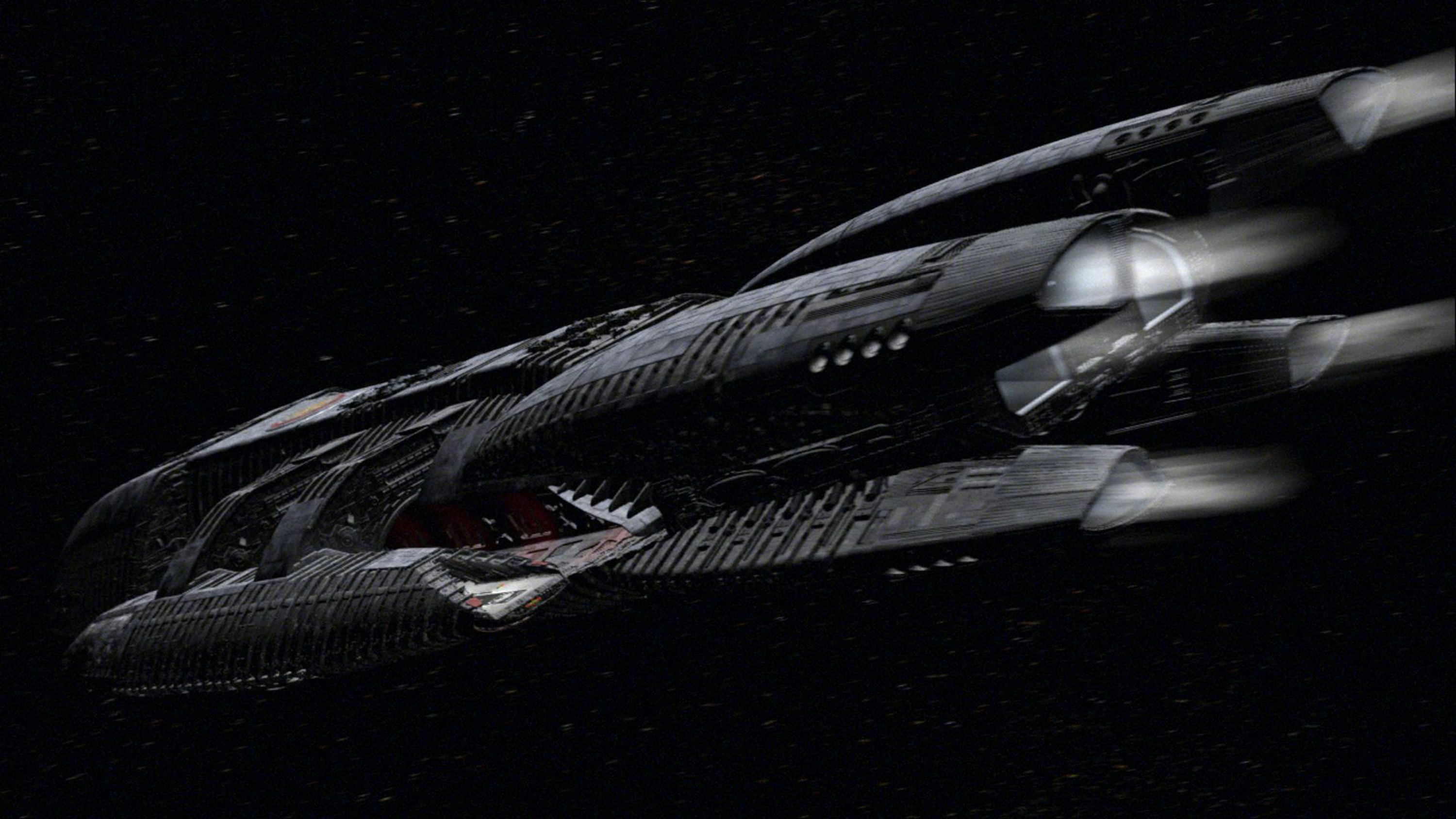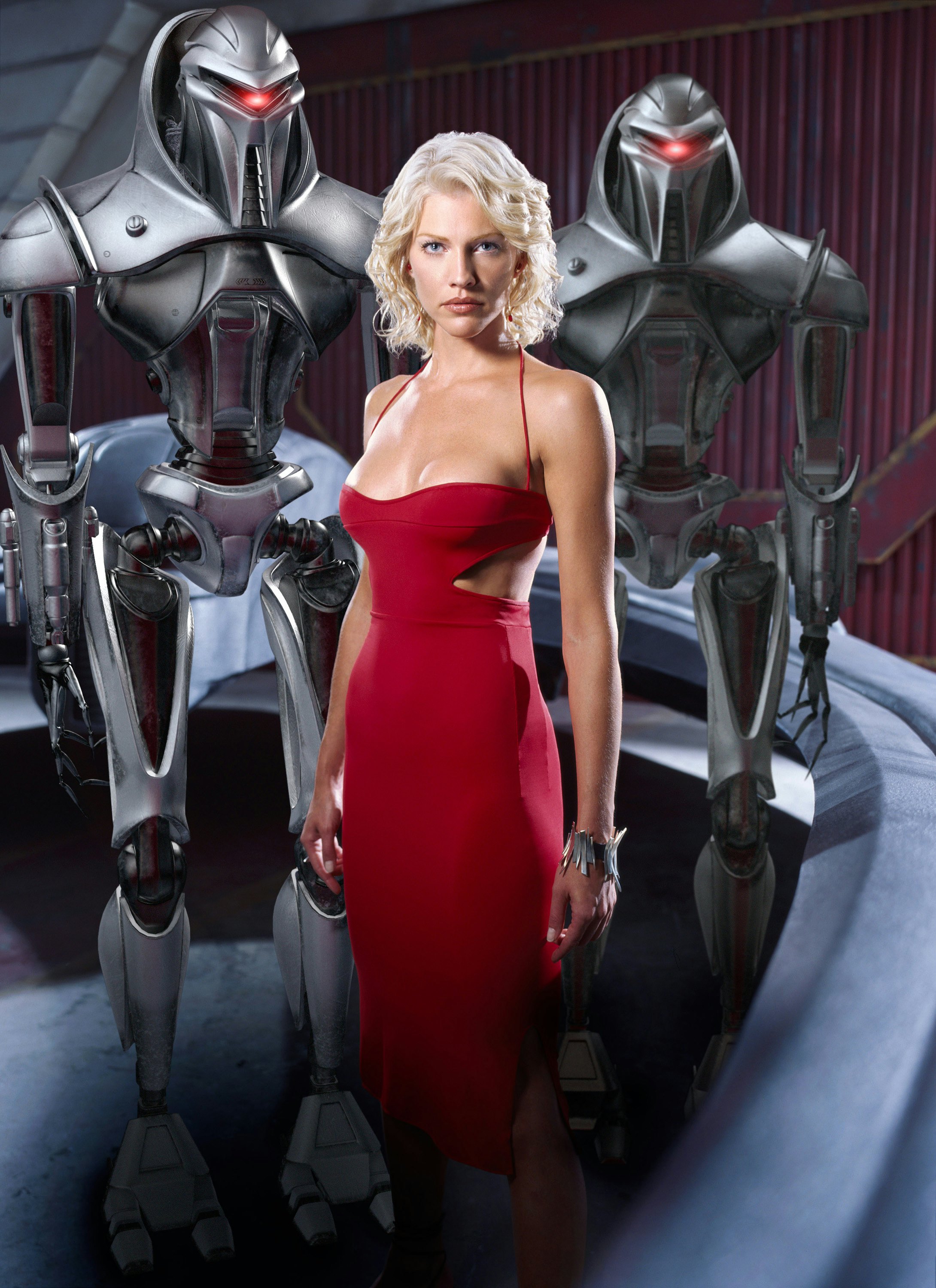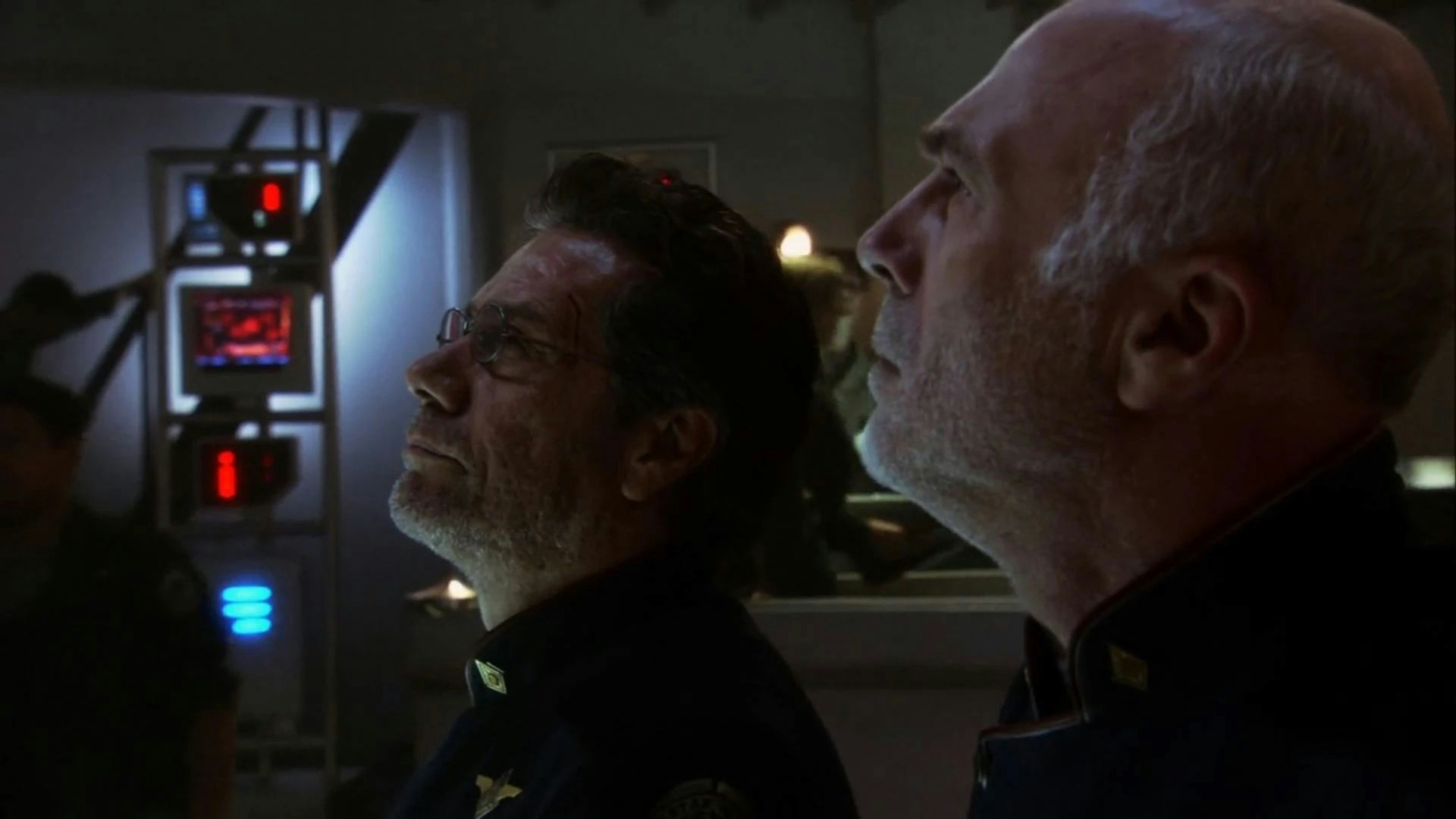
There are a lot of ground rules when reassessing the best of Battlestar Galactica. First, even though the reimagined version of the show (2003-2009) fully eclipsed the original (1978) series in both popularity and quality, it's still wise to make it clear which BSG you’re talking about; after all, the classic show has some good episodes, too. Second, when disciples of rebooted BSG try to convince the uninitiated to watch the show, we are obligated to strongly warn those newbies of the unevenness of the fourth and final season. Finally, it’s essential to remind people who have never watched the show that Season 1, Episode 1 — while a banger — is not the beginning of the show. Rather, the series began with a three-part miniseries that is the real start of the show. To be clear, the miniseries isn’t a weird backstory or prologue, it’s the actual first episodes in which everything that creates the overall thrust of the show happens.
And yet Battlestar Galactica’s true run of episodes began 20 years ago — on October 18, 2004 on Sky1 in the U.K., and January 24, 2005 on the Sci-Fi Channel (not yet “SyFy”) in the U.S. And the episode that launched that regular run was the aforementioned banger, titled “33.” Many fans will tell you this is still the greatest episode of BSG, and looking back 20 years later, there is some truth to that. While no two BSG “best of” lists tend to agree, several rankings (including Collider and Digital Trends) put “33” in the top five.
But, while it’s almost certainly true that Battlestar is the best and most influential sci-fi show of the 21st century, how does “33” hold up? Is this a high bar for the series, or a messy start to a run of regular episodes? The answer is a little bit of both.
Even for those who have never seen the series, the premise of BSG is likely well known: The remaining human survivors fleeing the Cylon holocaust are spread out among a handful of civilian starships, protected only by the lone warship (a “Battlestar”) named Galactica. The Cylons are aggressive human-made robots who have revolted twice — once when they were all very robot-looking, and again in the present tense of the show, starting with the first episode when we learn that Cylons have evolved to the point where many of them look and appear totally human. At the end of the miniseries, Commander Adama (Edward James Olmos) gets an anonymous tip that there are only 12 humanoid Cylon models, giving the show a mystery box that pervaded nearly its entire run.
When “33” begins, we already know about a handful of Cylon models, most prominently Number Six (Tricia Helfer) who, in one incarnation, was the lover of the traitorous Dr. Gaius Baltar (James Callis). Confusing new viewers, Six not only appears as various Cylon duplicates but also as a perpetual Snuffleupagus who only exists in Baltar’s mind, creating a metaphysical aspect to the villainous AI of the series right off the bat.
To remind viewers that there are “many copies” of the different Cylons, small parts of this episode cut away from the fleet and to Helo (Karl Agathon), a soldier left behind on Caprica, the pseudo-homeworld of the humans. Caprica is now occupied by the Cylons, and Helo meets a different version of Number Six, who briefly tries to seduce him. This Six is shot by Boomer (Grace Park), a fellow pilot and somebody who we know is also back on Galactica. Boomer can’t be in two places at the same time, which means both are Cylons. To make it all clear, “Head Six” tells Baltar that some Cylons may not even know they’re Cylons, thanks to clever programming.

It’s all quite a bit to juggle, and we haven’t even gotten to the primary A-plot of the episode; ie why this episode is actually called “33.” This structure, for better or worse, defines much of what makes BSG tick. You’ve got the actual weekly story front and center, with the lore-building mystery box stuff in the background. Obviously, a lot of shows have this exact format, but what makes “33” great, and Battlestar a (nearly) perfect sci-fi show, is that it tends to lean more heavily on the grounded character stuff than the material you need to know for the bigger arcs.
In “33,” the fleet is getting attacked by the Cylons every 33 minutes on the dot. When the episode opens, we’re told that the crew has gone “130.35 hours without sleep.” Because the Cylons are attacking so regularly, and the Galactica has to defend the unarmed civilian ships, fighters have to be scrambled, the attack has to be held off, while everyone spools up their faster-than-light drives and jumps away. To be clear, this premise is as brilliant as it is convenient. With one concept, writer Ronald D. Moore presented the essential drama of the show: How can an under-gunned space military protect the entirety of the human race against relentless automatons? The Cylons don’t need to sleep, but the humans do.
At the time, in 2004, starting a science fiction show out with all of the characters looking sleep-deprived and at their absolute worst was also provocative and somewhat new. While it's true Moore had cut his teeth on Star Trek: The Next Generation, and brought a level of grittiness to Deep Space Nine, the vibe of “33” couldn’t have been more anti-Star Trek. According to Moore in Edward Gross and Mark A. Altman’s oral history book So Say We All, Edward James Olmos encouraged his fellow actors to intentionally stay awake for days and days in order to make the shoot as accurate as possible. “Eddie did stay awake like 24 or 48 hours or something going into his scenes,” Moore recalled.
This pseudo-method acting works. If “33” did one thing perfectly for Battlestar is that it convinced you of its veneer of realism right out of the gate. Don’t worry about artificial gravity functioning on all these ships even though they are low on power. Don’t ask too many questions about why the faster-than-light jumps can’t take them further away than just nearby neighboring parts of space. It all works because Adama looks horrible and even cuts himself while taking a break to shave.

The realism in Battlestar came through the believability of the characters and how they would behave under extreme stress and mental exhaustion. Early in the episode Apollo (Jamie Bamber) tries to give a pep talk to his fellow pilots before having to fly another mission without rest. Again, this feels like a subversion of expectations. Because all the Viper pilots in the classic 1978 show felt like knock-offs of X-wing pilots in Star Wars, what “33” does is remind you that people fighting in a rebellion against an unstoppable force, wouldn’t look like grim, cool space warriors. They would look like hell.
“33” remains an excellent episode of Battlestar Galactica because of this fact alone. It established that beaten-down and utterly human characters were at the core of this wild science fiction show. It's a formula that Ron Moore and his collaborators have now perfected in For All Mankind. But, what “33” still has is a ghost of a space opera heart. There’s a bigness to this story that is suggested by the world-building we get throughout, even though the story feels relatively small and contained. Battlestar may not have come into its own yet at this point, but with “33” all the elements were put into motion for the first time.







